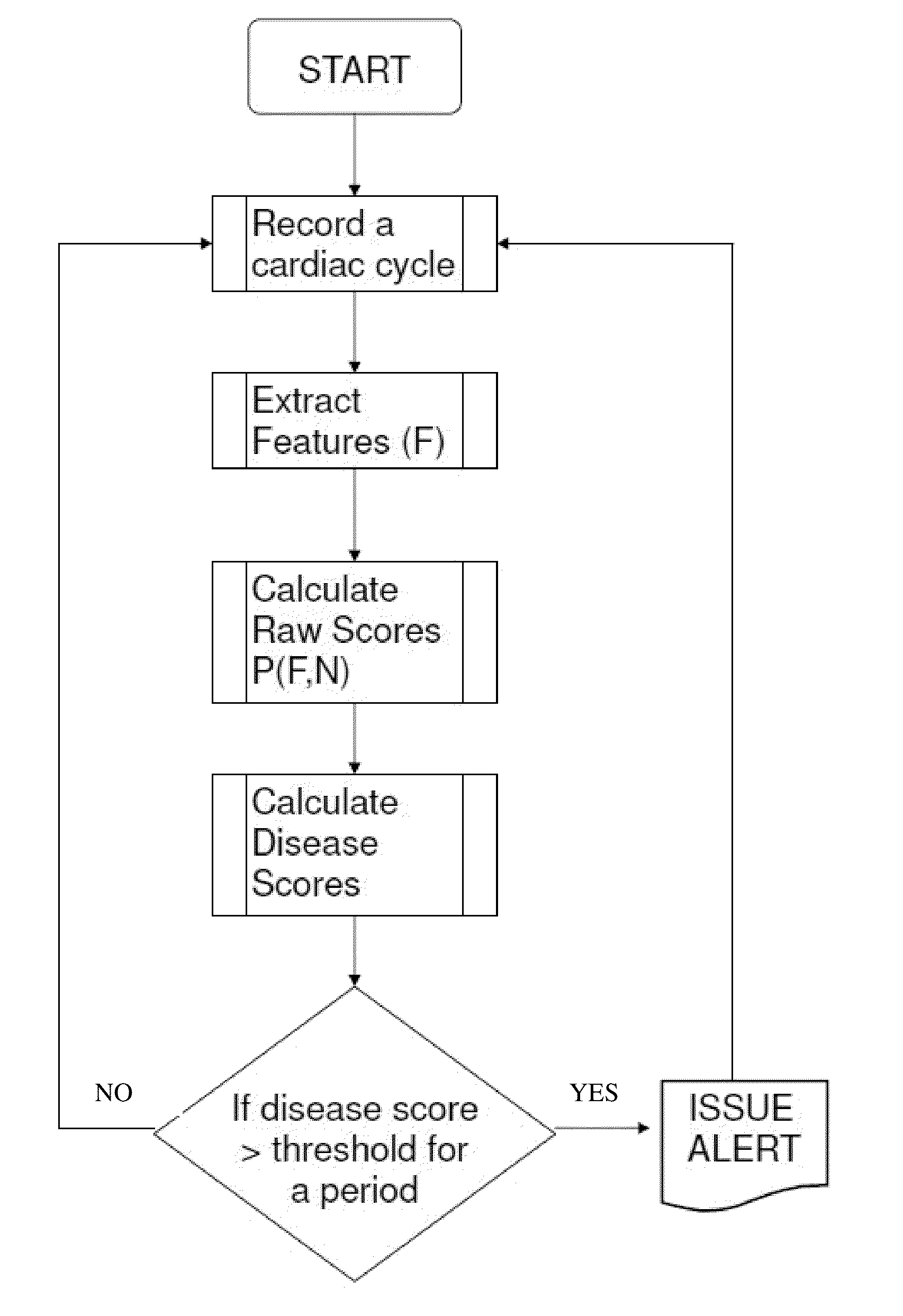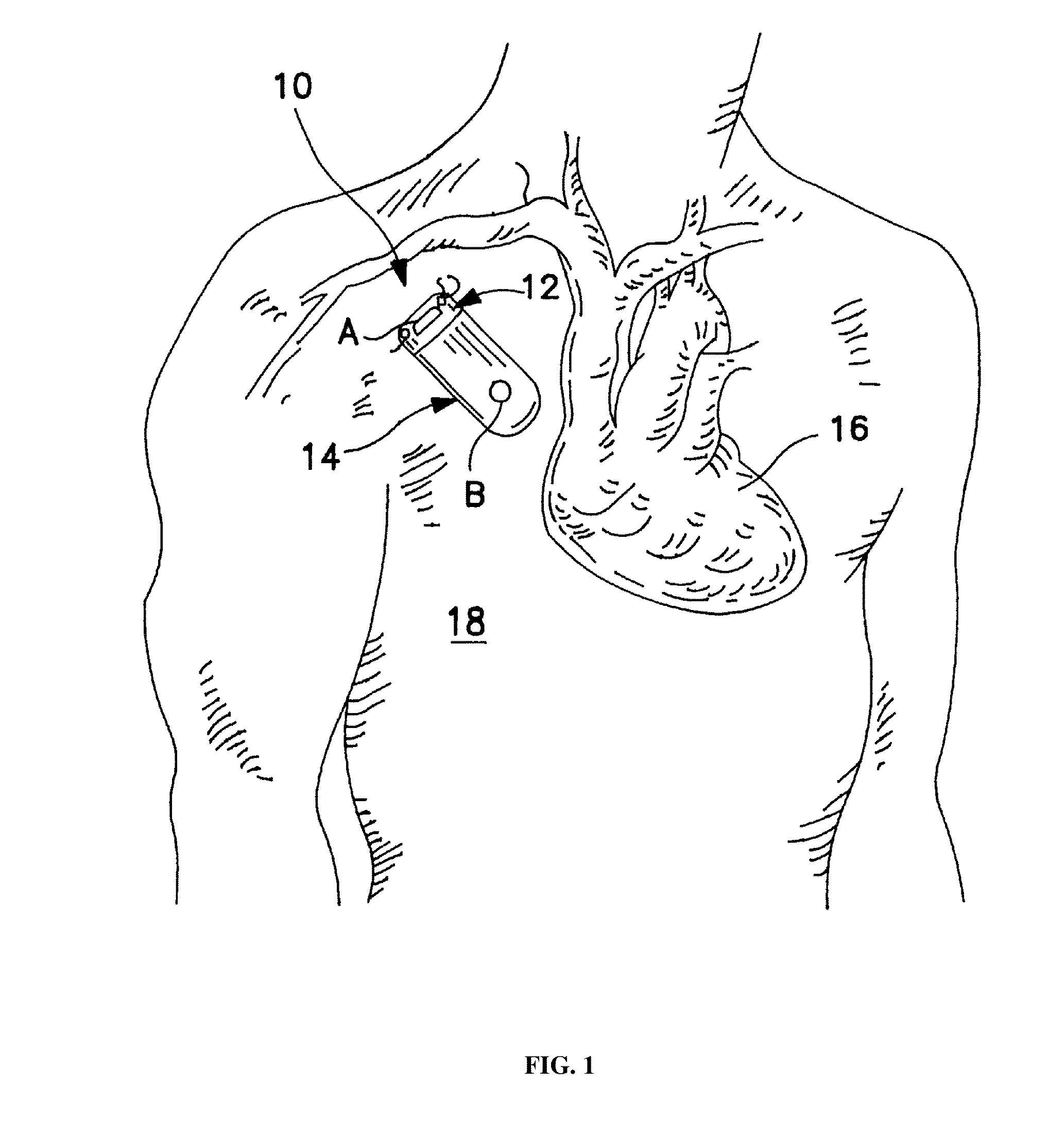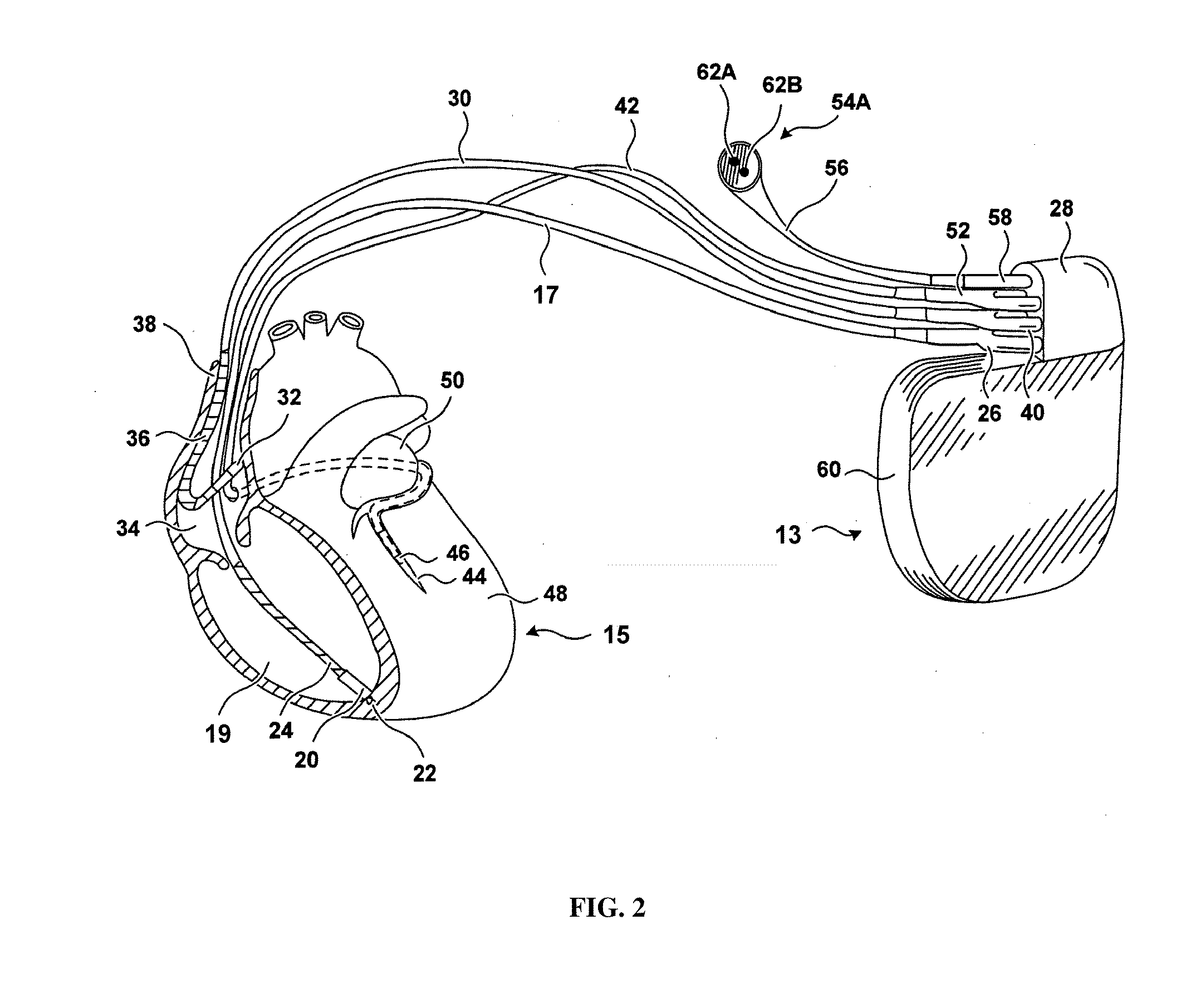Method and device to monitor patients with kidney disease
a kidney disease and patient technology, applied in the field of electronic medical devices, can solve the problems of reducing the frequency of dialysis procedures, patients becoming more susceptible to life-threatening arrhythmias, and failing to replicate the continuous waste removal aspect of a natural and functioning kidney
- Summary
- Abstract
- Description
- Claims
- Application Information
AI Technical Summary
Benefits of technology
Problems solved by technology
Method used
Image
Examples
example 1
Objective
[0317]This example is carried out in an effort to illustrate changes in skeletal muscle potential in response to variations in serum potassium concentration. The changes in skeletal muscle potential are effected via electrical excitation externally applied to the animal. The electrical excitation in this example is provided via a pulse stimulator coupled to an amplifier. Animal is infused with an externally applied potassium load and serum potassium concentrations are measured from the blood samples taken periodically. If this can be done, the procedure may be useful and significant in providing a method of monitoring potassium concentration without the subject having to go through the inconvenience and sometimes painful experiences associated with periodic blood sampling.
Experimental Setup
[0318]An exemplified pulsing schedule is generated for stimulating the skeletal muscle at varying rates. Briefly, the pulsing schedule generates a set of pulse stimulation every two secon...
example 2
Objective
[0328]This Example is conducted to determine if changes in the serum potassium concentration during dialysis can be detected by changes in the features of the ECG (electrocardiography), using data from the PODS (Potassium Observation in Dialysis Subjects Study). As detailed herein below, dialysis subjects are recruited and monitored in an effort to optimize their dialysis regimen and reduce their mortality and morbidity. Particularly various ECG features are reviewed in response to the potassium concentration changes and the ECG features that represent the most significant and / or consistent changes are identified for this subject population based on the data from the PODS. The data may then be used for the design of a detection algorithm for abnormality hypokalemia in heart failure subjects.
Experimental Setup
[0329]The PODS study is a single center, acute, non-randomized feasibility study in which data from 23 hemodialysis subjects are obtained via an external DR-180+ holter...
PUM
 Login to View More
Login to View More Abstract
Description
Claims
Application Information
 Login to View More
Login to View More - R&D
- Intellectual Property
- Life Sciences
- Materials
- Tech Scout
- Unparalleled Data Quality
- Higher Quality Content
- 60% Fewer Hallucinations
Browse by: Latest US Patents, China's latest patents, Technical Efficacy Thesaurus, Application Domain, Technology Topic, Popular Technical Reports.
© 2025 PatSnap. All rights reserved.Legal|Privacy policy|Modern Slavery Act Transparency Statement|Sitemap|About US| Contact US: help@patsnap.com



